
Data mining is a process of extracting and discovering patterns in large data sets involving methods at the intersection of machine learning, statistics, and database systems. Data mining is an interdisciplinary subfield of computer science and statistics with an overall goal to extract information from a data set and transform the information into a comprehensible structure for further use. Data mining is the analysis step of the "knowledge discovery in databases" process, or KDD. Aside from the raw analysis step, it also involves database and data management aspects, data pre-processing, model and inference considerations, interestingness metrics, complexity considerations, post-processing of discovered structures, visualization, and online updating.

Jürgen Schmidhuber is a computer scientist most noted for his work in the field of artificial intelligence, deep learning and artificial neural networks. He is a co-director of the Dalle Molle Institute for Artificial Intelligence Research in Lugano, in Ticino in southern Switzerland. Following Google Scholar, from 2016 to 2021 he has received more than 100,000 scientific citations. He has been referred to as "father of modern AI," "father of AI," "dad of mature AI," "Papa" of famous AI products, "Godfather," and "father of deep learning."

The Liverpool School of Tropical Medicine (LSTM) is a higher education institution with degree awarding powers and registered charity located in Liverpool, United Kingdom. Established in 1898, it was the first institution in the world dedicated to research and teaching in tropical medicine. The school has a research portfolio of over £220 million, assisted by funding from organisations such as the Bill & Melinda Gates Foundation, Wellcome Trust and Department for International Development (DFID).
Automatic identification and data capture (AIDC) refers to the methods of automatically identifying objects, collecting data about them, and entering them directly into computer systems, without human involvement. Technologies typically considered as part of AIDC include QR codes, bar codes, radio frequency identification (RFID), biometrics, magnetic stripes, optical character recognition (OCR), smart cards, and voice recognition. AIDC is also commonly referred to as "Automatic Identification", "Auto-ID" and "Automatic Data Capture".

A recurrent neural network (RNN) is a class of artificial neural networks where connections between nodes form a directed graph along a temporal sequence. This allows it to exhibit temporal dynamic behavior. Derived from feedforward neural networks, RNNs can use their internal state (memory) to process variable length sequences of inputs. This makes them applicable to tasks such as unsegmented, connected handwriting recognition or speech recognition.

Waikato Environment for Knowledge Analysis (Weka), developed at the University of Waikato, New Zealand, is free software licensed under the GNU General Public License, and the companion software to the book "Data Mining: Practical Machine Learning Tools and Techniques".
SIGKDD, representing the Association for Computing Machinery's (ACM) Special Interest Group (SIG) on Knowledge Discovery and Data Mining, hosts an influential annual conference.

Long short-term memory (LSTM) is an artificial recurrent neural network (RNN) architecture used in the field of deep learning. Unlike standard feedforward neural networks, LSTM has feedback connections. It can process not only single data points, but also entire sequences of data. For example, LSTM is applicable to tasks such as unsegmented, connected handwriting recognition, speech recognition and anomaly detection in network traffic or IDSs.
There are many types of artificial neural networks (ANN).
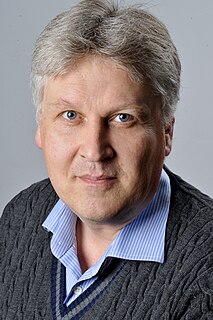
Josef "Sepp" Hochreiter is a German computer scientist. Since 2018 he has led the Institute for Machine Learning at the Johannes Kepler University of Linz after having led the Institute of Bioinformatics from 2006 to 2018. In 2017 he became the head of the Linz Institute of Technology (LIT) AI Lab. Previously, he was at the Technical University of Berlin, at the University of Colorado at Boulder, and at the Technical University of Munich.

Deep learning is part of a broader family of machine learning methods based on artificial neural networks with representation learning. Learning can be supervised, semi-supervised or unsupervised.
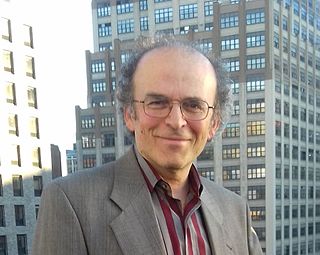
Gregory I. Piatetsky-Shapiro is a data scientist and the co-founder of the KDD conferences, and co-founder and past chair of the Association for Computing Machinery SIGKDD group for Knowledge Discovery, Data Mining and Data Science. He is the founder and president of KDnuggets, a discussion and learning website for Business Analytics, Data Mining and Data Science.

Automated machine learning (AutoML) is the process of automating the tasks of applying machine learning to real-world problems. AutoML covers the complete pipeline from the raw dataset to the deployable machine learning model. AutoML was proposed as an artificial intelligence-based solution to the ever-growing challenge of applying machine learning. The high degree of automation in AutoML allows non-experts to make use of machine learning models and techniques without requiring them to become experts in machine learning. Automating the process of applying machine learning end-to-end additionally offers the advantages of producing simpler solutions, faster creation of those solutions, and models that often outperform hand-designed models. AutoML has been used to compare the relative importance of each factor in a prediction model.
Paraphrase or paraphrasing in computational linguistics is the natural language processing task of detecting and generating paraphrases. Applications of paraphrasing are varied including information retrieval, question answering, text summarization, and plagiarism detection. Paraphrasing is also useful in the evaluation of machine translation, as well as semantic parsing and generation of new samples to expand existing corpora.
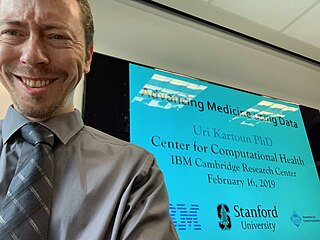
EMRBots are experimental artificially generated electronic medical records (EMRs). The aim of EMRBots is to allow non-commercial entities to use the artificial patient repositories to practice statistical and machine-learning algorithms. Commercial entities can also use the repositories for any purpose, as long as they do not create software products using the repositories.
In video games, various artificial intelligence techniques have been used in a variety of ways, ranging from non-player character (NPC) control to procedural content generation (PCG). Machine learning is a subset of artificial intelligence that focuses on using algorithms and statistical models to make machines act without specific programming. This is in sharp contrast to traditional methods of artificial intelligence such as search trees and expert systems.
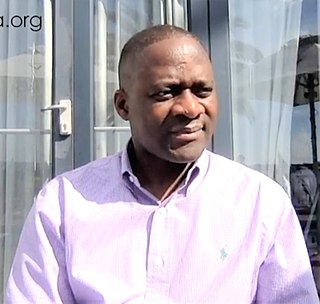
Henry Charles Mwandumba is an African Professor of Medicine and Deputy Director of the Malawi-Liverpool-Wellcome research programme. He works on the tuberculosis phagosome in the University of Malawi College of Medicine, and serves as President of the Federation of African Immunological Societies. In 2019 Mwandumba was awarded the Royal Society Africa Prize.

A transformer is a deep learning model that adopts the mechanism of attention, differentially weighing the significance of each part of the input data. It is used primarily in the field of natural language processing (NLP) and in computer vision (CV).
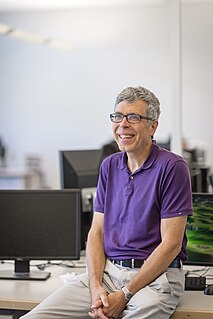
Martin Ester is a Canadian-German Full Professor of Computing Science at Simon Fraser University. His research focuses on researcher data mining and machine learning.

Generative Pre-trained Transformer 2 (GPT-2) is an open-source artificial intelligence created by OpenAI in February 2019. GPT-2 translates text, answers questions, summarizes passages, and generates text output on a level that, while sometimes indistinguishable from that of humans, can become repetitive or nonsensical when generating long passages. It is a general-purpose learner; it was not specifically trained to do any of these tasks, and its ability to perform them is an extension of its general ability to accurately synthesize the next item in an arbitrary sequence. GPT-2 was created as a "direct scale-up" of OpenAI's 2018 GPT model, with a ten-fold increase in both its parameter count and the size of its training dataset.









